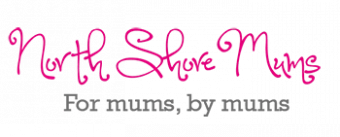It’s well-known that pregnancy takes its toll on a woman’s body. And for some women, rectus diastasis (when tummy muscles separate or split down the middle) is one of the realities of life post-partum. Pip Coomes from Sydney Advanced Physiotherapy at Lindfield gives her professional take on the problem and how to handle it.
Your stomach muscles are going to stretch when you’re pregnant – that’s a given. What you need to understand is that it’s the whole abdominal wall that stretches – not just the 6-pack muscles. How you recover from this stretched state can impact your ability to return to normal activities, stay continent and/or your ability to function without spinal or pelvic pain. Sure, some lucky people snap back into shape after having a baby but a much larger group of people need help.
That might sound drastic but it’s important to understand how the function of all of the abdominal muscles, not just the core, will impact your life. The easiest way to think about the abdominal wall is in three layers:
- External oblique (EO)
- Internal oblique (IO)
- Transverse abdominus (TA) Your TA, which is set at the deepest level, is traditionally thought of as your ‘core’ muscle.
What happens to stomach muscles during pregnancy?
The rectus abdominus (6 pack) is divided down the middle by a line of tissue called the linea alba – think of this as being like strong glad wrap. When you’re pregnant the abdomen gets stretched and the 6-pack separates, so the ‘glad wrap’ in the middle (the linea alba) gets stretched too. Once the baby is born then the linea alba can be floppy where it should be firm. Your ability to generate tension within the linea alba hugely impacts your ability to recover well.
Why is restoring the muscle so important?
Your abs are the link or the bridge between your mid-back and pelvis and they are are needed for a wide range of activities including breathing, pelvic organ support and continence mechanism.
What are the signs of stomach muscle separation?
We often see women in our clinic who come in 6 or more months after having a baby when they’ve returned to exercise and noticed their abs aren’t the same.
- Protruding stomach area – some women notice there’s something bulging through the middle when they do exercises like sit ups
- ‘Mummy tummy’ – some women notice they still have the ‘mummy tummy’ bulge. These women generally have ‘altered strategies’ through the pelvic floor and abdominal wall. In other words, some muscles are working too hard and others aren’t doing enough. The mummy tummy bulge essentially comes from someone not being able to control the pressure in their abdomen. This can be because they have a twist in the system (e.g. in the rib cage or pelvis) or because the abdominal muscles aren’t doing what they need to (or both).
- Poor posture -it’s common to see women with altered posture after childbirth. Women who have lost their postural control might push their hips forward and lean their upper body backwards when standing, so it’s not sitting right on top of the pelvis. This position puts strain on your hips and is the most common reason why women have weak bum muscles after having babies. This posture also means your bladder doesn’t sit in an ideal position which challenges your continence mechanism. Your posture has a huge impact on the pressures in your pelvis and abdomen – when someone’s stomach doesn’t recover well it is often because of pressure control issues. Some people find the pressure goes out the front and they have a tummy they can’t get rid of, and others find it goes down through the pelvic floor and they have prolapses.
How we diagnose
During an ultrasound, we may ask people to perform an exercise, such as a crunch, so we can watch each muscle and see if it’s doing what it’s supposed to do. Often we see people’s transverse abdominus (TA) isn’t doing much and they’re just using their internal oblique (IO) and pulling the separation apart more. Getting these muscles to work together will create tension on the midline. If you can remove any twists in the body that may be caused by alignment issues or posture, you can create tension on the midline and that separation may narrow. In some cases the gap won’t narrow but as long as you can create tension along the linea alba and your muscle activation patterns are good then this may be all you need.
Did you know?
- Recent research shows there is no link between the size of the diastasis/separation you experience and how much weight you gained in pregnancy, the baby’s birth weight or your abdominal size.
- Diastasis is not something that just happens to post natal women. You can see it in men too for a variety of reasons!
How to handle muscle separation
- Research shows that the longer you leave these issues before you deal with them the more difficult they are to resolve, so don’t put off getting a professional assessment.
- Recovery shorts or abdominal supports can help reorganise things a little faster and encourage better posture and abdominal activation, but mainly early in the postnatal period. They’re not as useful a few months down the road.
If you would like any clarification you can contact Pip here
Did you struggle with stomach muscle separation post-partum?
More on health…












